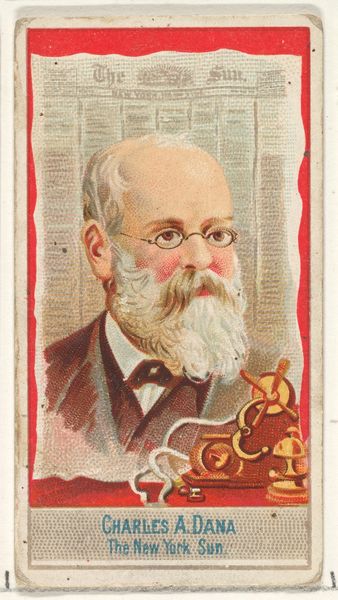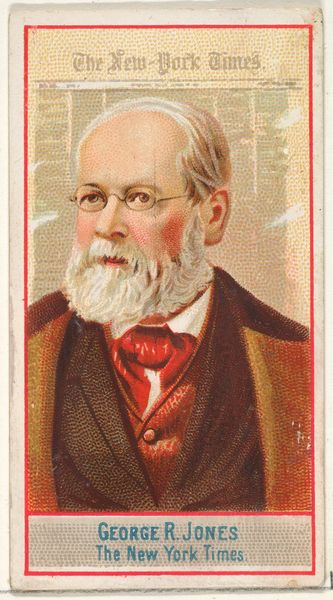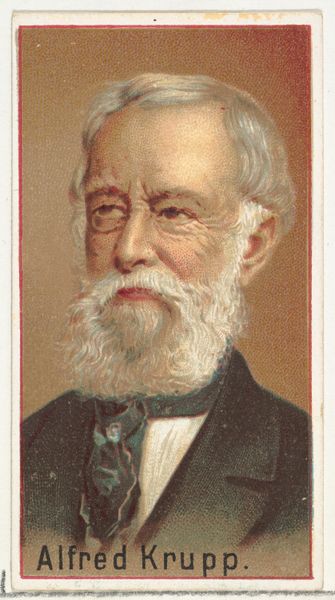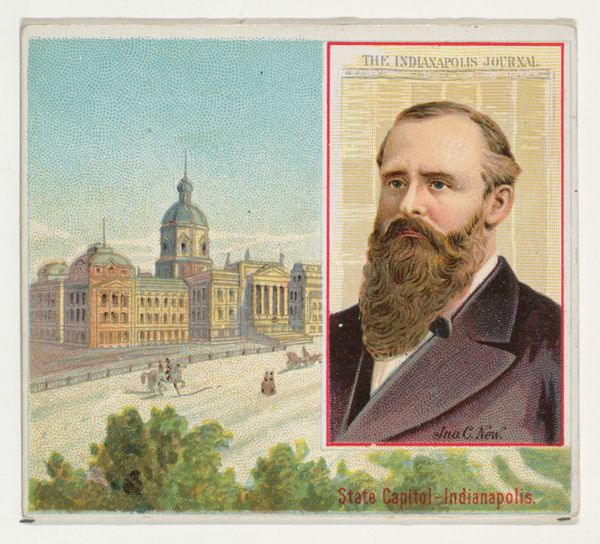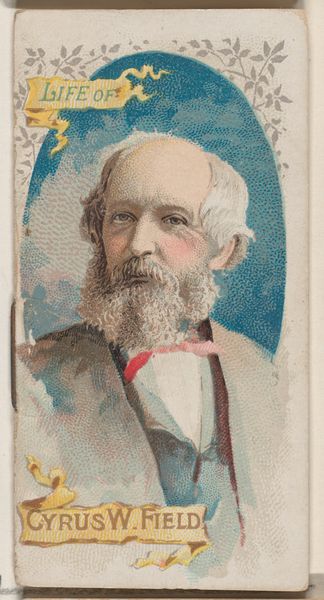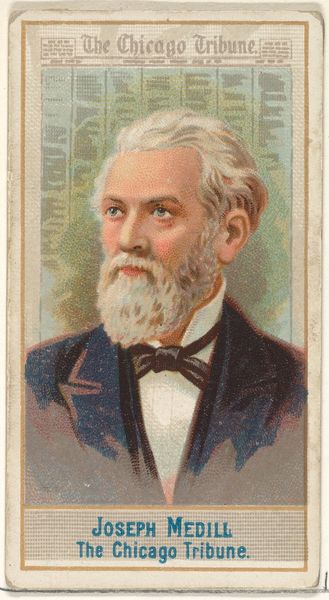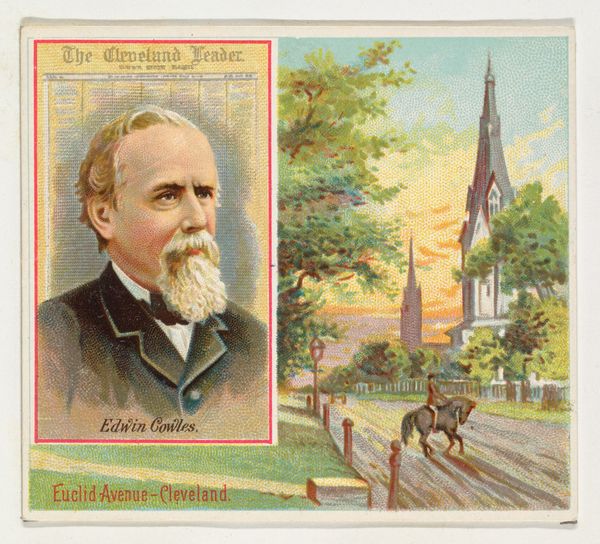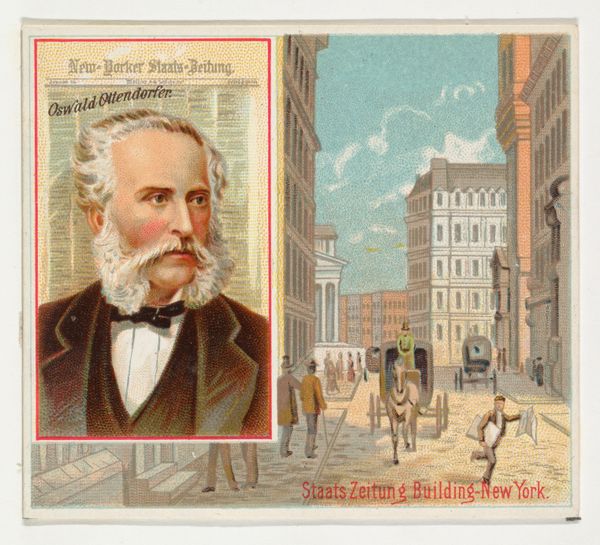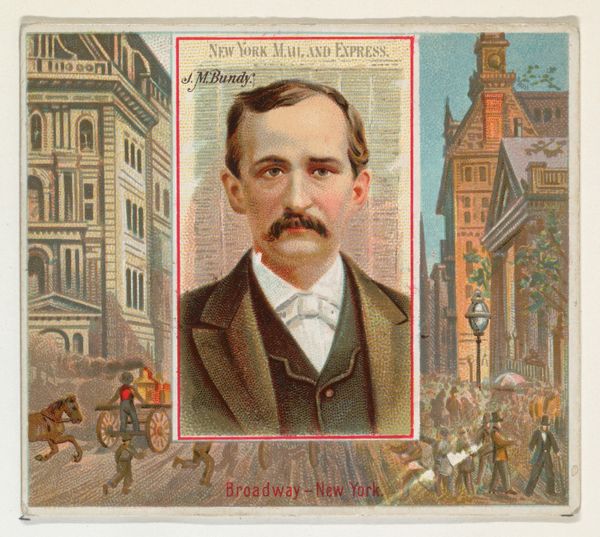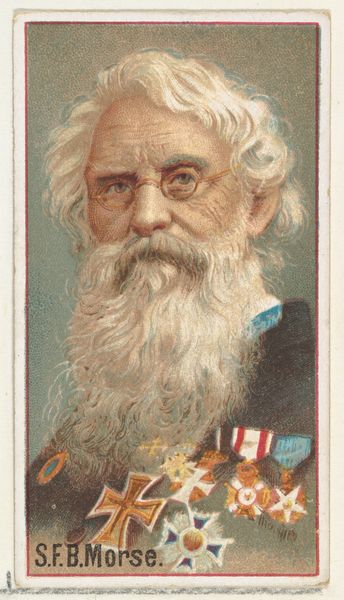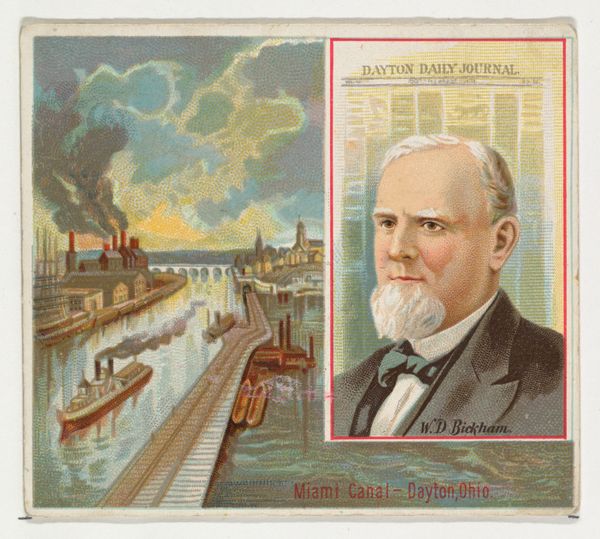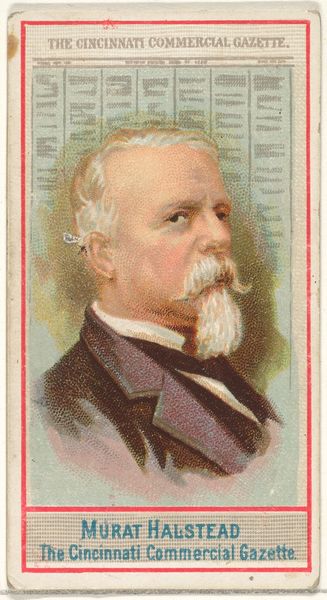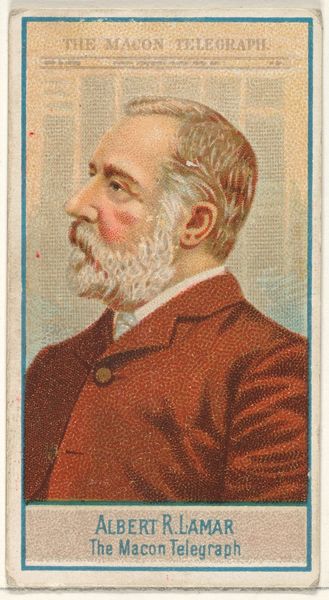
Charles A. Dana, The New York Sun, from the American Editors series (N35) for Allen & Ginter Cigarettes 1887
0:00
0:00
drawing, lithograph, print
#
portrait
#
drawing
#
lithograph
# print
#
cityscape
#
watercolor
#
building
Dimensions: Sheet: 2 7/8 x 3 1/4 in. (7.3 x 8.3 cm)
Copyright: Public Domain
Curator: This print from 1887 comes from a series called "American Editors" by Allen & Ginter Cigarettes, and it showcases Charles A. Dana of *The New York Sun*. It combines a portrait with a cityscape of the New York Post Office. Editor: It feels incredibly... nostalgic. The soft lithograph style almost turns reality into a kind of dreamy, idealized past. Is it just me, or does this look like a Victorian-era Instagram post? Curator: Ha! Well, in a way, yes. Cigarette cards functioned as miniature collectibles, windows into different aspects of American culture. Dana, the editor, represents intellectual power, while the New York Post Office building stood as a symbol of progress and connectivity. Editor: I notice there is this elaborate telegraph equipment is placed to his side; so it suggests urgency, news dissemination… that information is power? Curator: Precisely. The telegraph next to Dana links him to the rapid flow of information shaping the era. His stern gaze is framed by the newspaper’s masthead, driving home the message that he is integral to "The Sun’s" identity. There is a calculated iconography to it. Editor: I wonder, how intentional was the placement of Dana’s likeness beside the post office depiction? Almost like, “Here are the two pillars upholding civilized society: News, and… well, mail." Or am I reading too much into this? Curator: It is more than possible; remember that the Post Office was THE place of communication for much of society for most of modern history. These buildings were purposely created to awe people, to remind them of the stability and promise of civil society. The pairing highlights interconnectedness. Information, government, transportation - these are the building blocks, both literally and figuratively. Editor: Thinking about those little cards…it’s fascinating how a mundane object transforms into a little cultural artifact. Sort of democratizing the arts…making accessible? Curator: That is well observed. In that small format, history becomes pocket-sized. Looking at it now offers us insight to those times. Editor: Totally. It reminds you to wonder about all the untold stories embedded in things we overlook.
Comments
No comments
Be the first to comment and join the conversation on the ultimate creative platform.
